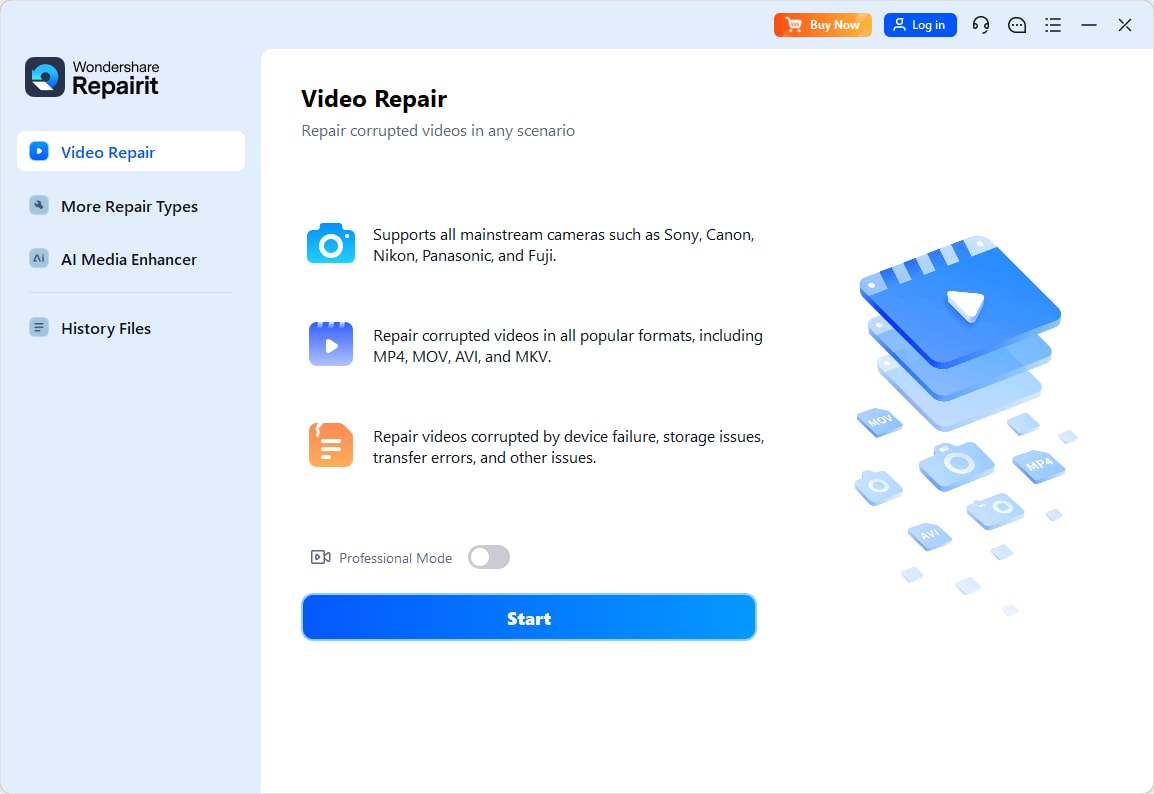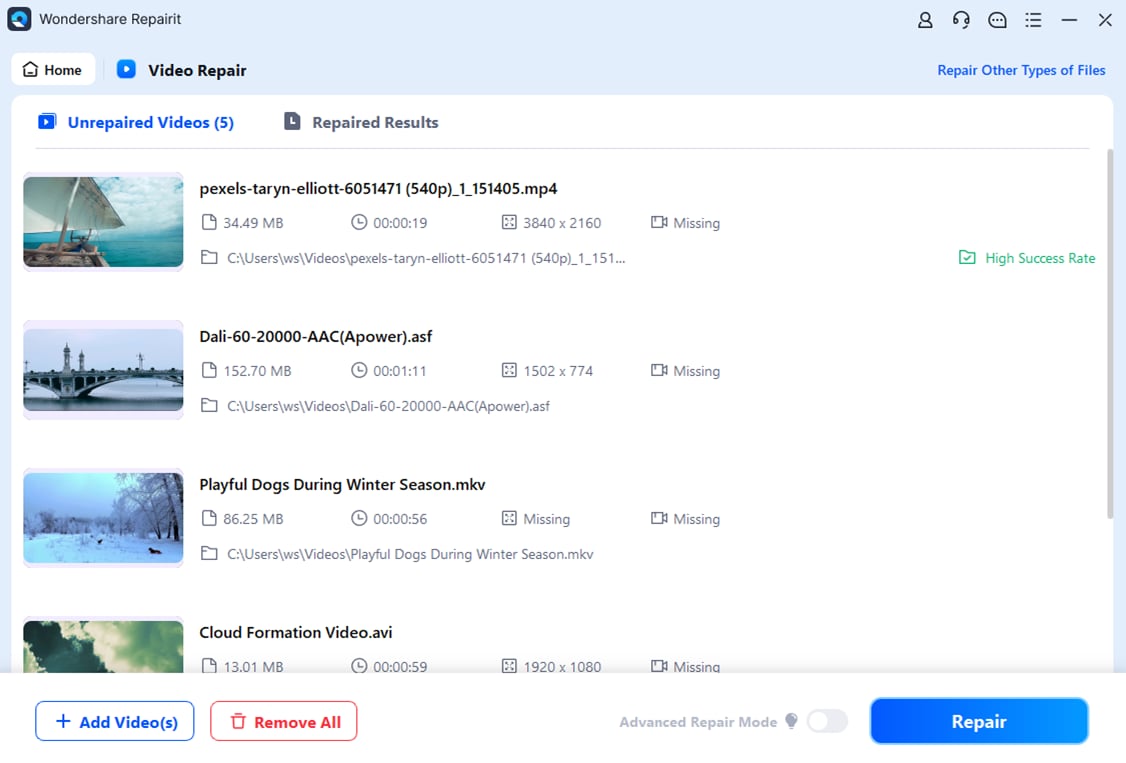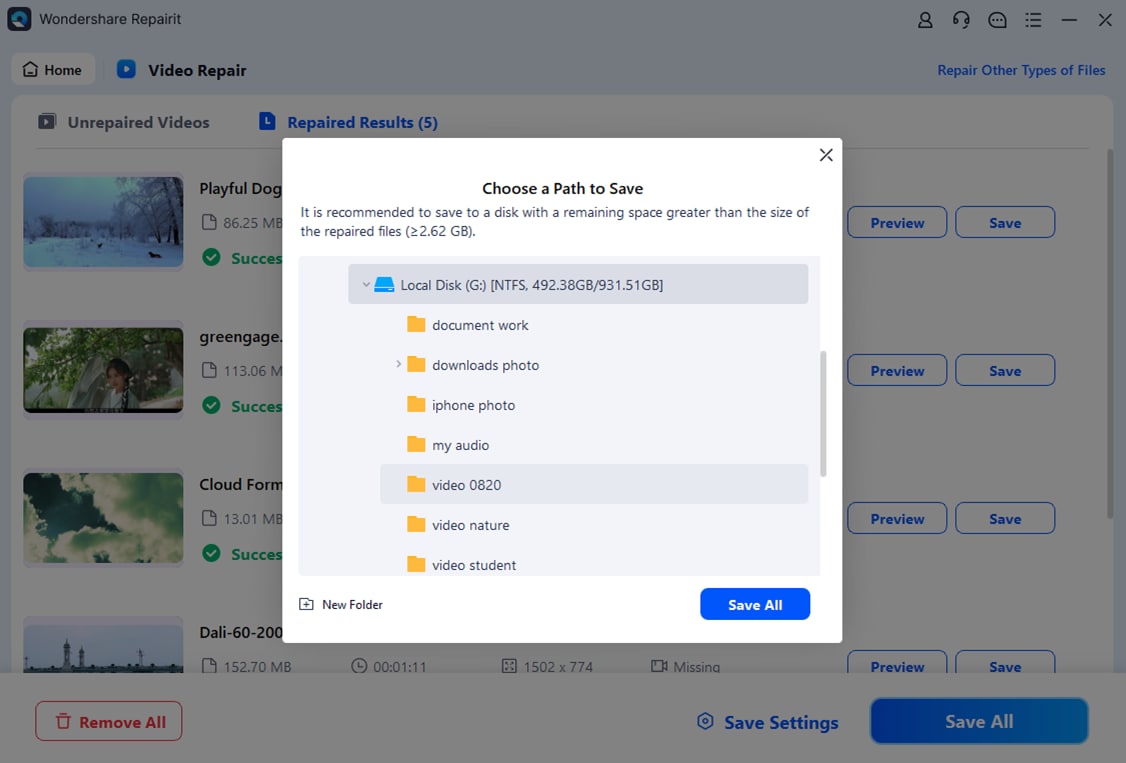"Anyone else have playback issues with older or maybe just certain avi files on your plex server? I have two different servers as I am transitioning from one to the other and there are some avi files that either play but look like they are choppy or stop and buffer sometimes indefinitely."
Have you ever experienced issues playing specific AVI files like this reddit user?
This article will explain everything about AVI files. You will also learn the common problems they encounter. The most important is we will guide you on how you may troubleshoot them. If you’re dealing with old videos or just trying to play your media properly, understanding AVI files might help you avoid playback problems.
In this article
Part 1: What is an AVI File?

An AVI file, or Audio Video Interleave file, is a multimedia format that contains both sound and video in a synchronized way. It was established by Microsoft in 1992 to allow computers to play music and video together without having separate files. Since then, AVI has become a popular format, used for storing movies, TV shows, and personal recordings.
Here are the key elements of the AVI file format:
- Container for Audio and Video: AVI works as a container that stores both audio and video streams, keeping them in sync during playback.
- Support for Multiple Codecs: AVI files can use various codecs to encode video, providing flexible file generation.
- High Quality but Large Size: AVI files generally store uncompressed data. This results in higher quality but larger file sizes. This makes them handy where quality counts, such as in video editing.
- Broad Compatibility: AVI files are supported by many devices, media players, and operating systems. This makes them easy to play without requiring extra software.
- Simple Structure: Unlike newer formats, AVI lacks some complex features like interactive menus or chapters. However, its simplicity makes it easy to use.
Part 2: Common Issues with AVI Files
AVI files can sometimes run into issues that inhibit smooth playback. This section outlines some of the most common challenges you may face when dealing with AVI files.
1. Corrupted AVI File
Corruption develops when part of the file gets damaged or unreadable. This can occur because of an interrupted download, sudden power outage, or incomplete transfers. Corrupted files may fail to open or show problems. It consists of missing frames or scrambled images. These files may also delay during playback or stop playing halfway.
2. Missing Audio or Video Streams
In some instances, an AVI file could play with either audio or video missing. You might view the video but hear no sound, or hear the audio without any video. This issue commonly occurs when one of the streams becomes broken or is not recognized by the media player. Another cause could be that the music or video was encoded using a codec that the media player doesn’t support.
3. AVI File Won't Play on Certain Media Players
Not all media players handle AVI files the same way. Some players could produce an error message showing the format is unsupported. Others may refuse to open the file altogether. This problem commonly happens when the media player does not have the correct codec installed to decode the audio or video streams.
More to read: 3 Methods to Repair AVI File Not Playing in VLC Player
4. AVI Codec Errors
A codec is required to compress or decompress the video and audio streams in an AVI file. If the essential codec is missing or not working properly, the file may play improperly or not at all. This can result in poor video quality, unusual colors, or distorted sound. Codec faults can also contribute to synchronization problems. This is when the audio plays faster or slower than the visual.
Part 3: How to Troubleshoot Common AVI File Issues?
Fixing AVI difficulties can be straightforward with the appropriate tools and procedures. Here are some of the most successful techniques to restore or improve AVI playback.
Troubleshoot 1. Use Repairit Video Repair for Corruption
Repairit Video Repair is a professional tool developed to fix damaged video files, including AVI. It specializes in recovering corrupted files by restoring broken frames and repairing missing video or audio streams.
Key Features of Repairit for AVI Files:
- Repairit can handle even badly corrupted AVI files that won't open or play correctly.
- Fixes many files at the same time, saving time when working with different corrupted videos.
- This tool corrects synchronization difficulties between audio and video.
- It guarantees that the repaired video remains in its original quality without any data loss.
Here are the steps on how to use Repairit Video Repair. It may help you fix the issue if your AVI video file is corrupted.
Step 1. Hit the +Add button and pick your corrupted AVI video files.

Step 2. Click Repair to start.

Step 3. After repairing, you may Preview your AVI file to see if your problem is fixed. If it is, click Save to download it.

Use Repairit Video Repair to Fix AVI Video

Troubleshoot 2. Update Codecs
AVI files rely on codecs to play audio and video correctly. If a codec is old or missing, the file may not function properly. Updating to the latest codec packs guarantees the system can decode all the essential streams. This is very beneficial when working with rare or less common AVI codecs.
If you do not have a codec, here are steps on how to install K-Lite Codec Pack:
Step 1. Visit trusted websites like the official K-Lite Codec Pack page.
Step 2. Download the coChoose from Basic, Standard, Full, or Mega.

Step 3. Run the installer and make sure to select the necessary codecs during setup.
Step 4. Restart your device.

Step 5. Open the file again using your media player to see if the issue is resolved.
Troubleshoot 3. Try a Different Player
Not all media players offer the same level of compatibility with AVI files. Players like VLC Media Player are known for supporting a wide range of formats and codecs out of the box. Switching this player can typically address playing issues without requiring additional software or codecs.
VLC Media Player supports a wide range of formats and works well with older or uncommon codecs. It is highly reliable for playing even uncommon files. VLC also has built-in tools to handle playback errors. This tool’s lightweight design allows your device to run smoothly.
VLC can be used in Windows, macOS, Android, and even iOS. With VLC, you don’t need to install additional codecs. It plays AVI files in just a few clicks. If you're dealing with buffering or choppy playback, VLC often will provide you a smooth experience.
Step 1. Get VLC Media Player from its official website.
Step 2. Open the software, go to Media and select Open File. Select your AVI file and VLC will play it instantly.

Troubleshoot 4. Change the Video to Another File Format
If an AVI file remains difficult, changing it to another format like MP4 or MKV can help. MP4 is more heavily supported across devices and players, giving it a solid choice. Conversion also allows the video to be reduced or modified without reducing its quality greatly. Many tools provide convenient converting choices. This guarantees that the file plays smoothly on all platforms.
FreeConvert is a free online tool that makes converting AVI files quick and easy. It supports many formats like MP4, which offers better compatibility across different devices and media players. One of its key features is the ability to adjust video quality and file size during conversion. This gives you control over how the final video will look.
Using this tool, you can convert multiple AVI files at once. Furthermore, the platform even supports cloud storage, allowing you to upload from or save directly to Google Drive or Dropbox.
Step 1. Visit FreeConvert website online. Click Choose Files and select the AVI file from your computer or cloud storage.

Step 2. Choose MP4 or another format from the dropdown menu. Click the gear icon to adjust quality or resolution if needed. Then, click on Convert.

Step 3. Once ready, click Download to save the new file to your device.

Conclusion
AVI files are widely used and flexible, however they are not without issues. Corruption, missing audio or video streams, codec failures, and playback issues can interfere with smooth viewing. With tools like Repairit Video Repair and basic troubleshooting procedures, most of these problems may be fixed fast.
Keeping your codecs current, using trusted media players, and transcoding files as needed guarantees that your AVI videos are always accessible. Knowing how to deal with these issues can help you watch your videos without interruption and maintain your files in good condition.
FAQ
-
Is AVI more than MP4?
AVI files are useful for editing or archiving since they often use low compression. They provide better video quality. They are bigger, hence sharing and storage can be more difficult. MP4 is therefore perfect for streaming and playback on phones, tablets, and web platforms since it employs advanced compression.This maintains file sizes minimal without compromising too much quality. AVI is an excellent choice if you want great quality and are not bothered about big files. MP4 is more practical generally and for greater compatibility.
-
Are AVI files still utilized today?
Though less common as it once was, AVI still finds use. For projects like professional video editing or home video saving where excellent quality counts, many people turn to AVI. Some older videos and movies were saved in AVI format.Thus it’s still usual to discover these files on outdated devices or in personal collections. Although codecs like MP4 have taken over for streaming and sharing, AVI remains effective when file size isn’t a problem and quality is the primary goal.
-
Can I stream AVI files on sites like Plex?
Yes, although you may run into playback troubles with some AVI files on Plex. This can happen if the file uses rare codecs that Plex doesn't handle well. When streaming, AVI’s big size could cause loading issues, especially over weak networks.


 ChatGPT
ChatGPT
 Perplexity
Perplexity
 Google AI Mode
Google AI Mode
 Grok
Grok

